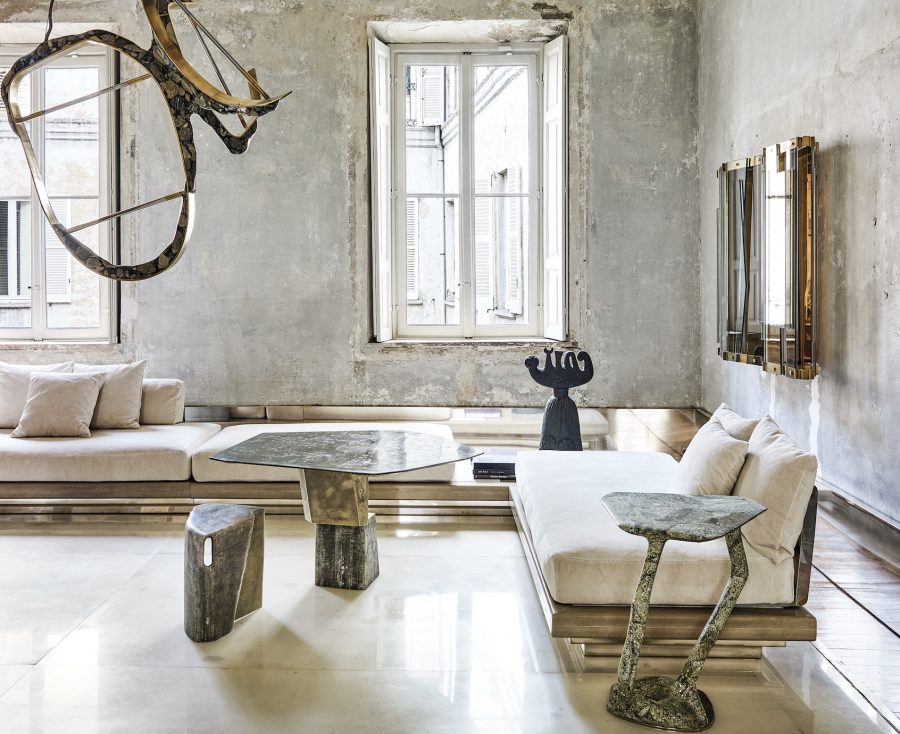Art is good for you. But it’s not spinach. Its purpose is not to make you healthier or wiser says the New York Times in a recent article — although that could happen along the way. The reason to nourish a relationship with art is the same as the reason for bonding with other people: to feel more fully human. Just like friendships or romances, these connections can be hard to initiate, and complicated to manage. But it will be worth it. We’re here to help you build confidence in your own taste and make a rewarding place for art in your life.
Collecting art is as much about beauty and desirability as it about the investment value.
Trends change quickly. Buyers are more demanding. If there is a lesson to be drawn from the financial crisis, it is that buyers became more discerning in both the artists they favour and the price they will pay. Combine your passion with an informed decision and you’ll have something you love every day and maybe it goes up one day.
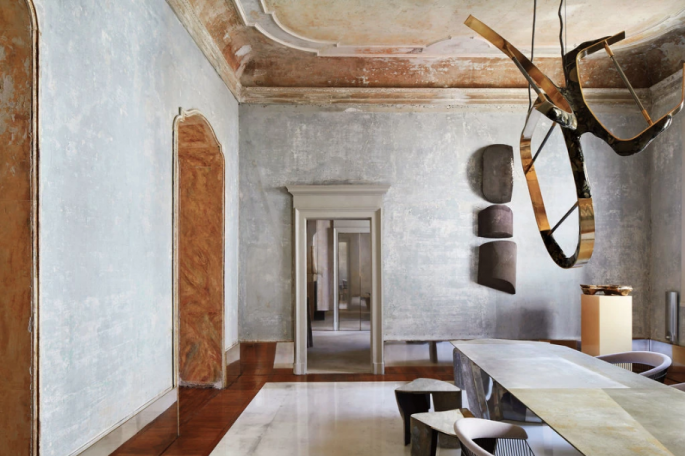
Architect Vincenzo De Cotiis apartment features artworks that intrigue. Image courtesy of Architectural Digest France.
Trust Yourself
Remember: You are the expert on you. Art can feel too big. Too much. Billions of words have been spilled on the subject, and you’ll never be able to read them all. It’s easy to feel intimidated because you’re not an expert on the Renaissance or Fauvism, and you can’t quickly articulate the difference between the Baroque and the Rococo.
But it all comes down to one thing: Your own reaction is the one that counts. There is no single right answer. Your response is essential, and it can’t be faked. There is no value in mouthing the conventional wisdom, or in taking the word of an esteemed critic as gospel and convincing yourself that you agree. Identifying your own reaction, in its emotional and intellectual and spiritual dimensions, is the whole point of the enterprise.
You, a person with a genuine interest in art and an open mind, are fully equipped. You don’t need anything else, really. So let’s go.
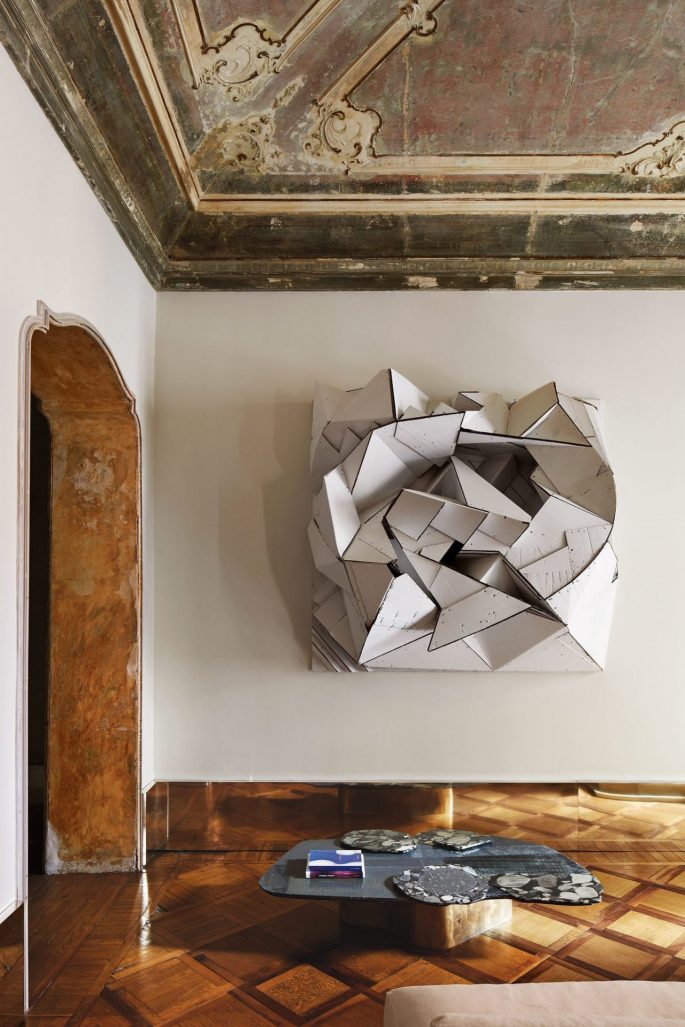
Works of arts are just objects. What makes them special is the experience you have with them such as the knockout pieces in Milan-based architect Vincenzo De Cotiis apartment.
How to Look
It’s the experience that counts. Walking into a roomful of art can be intimidating, even if you’ve done it hundreds of times. There’s pressure: to make the most of it, to absorb it all, to learn something valuable, to impress your pals, to feel like you “get it.” Especially if you’re not looking at paintings or sculpture, “getting it” can feel like an undone chore. Don’t worry about this stuff.
Works of art are just objects, like a refrigerator or a vacuum cleaner. What makes them special is the experience you have with them.
At a big museum exhibition, you’ll probably be confronted with a LARGE INTRODUCTORY TEXT on the wall as soon as you enter. In a commercial gallery, there is often very little on the walls other than the art, although you’ll often find a handout with information about the artist and the work.
Just remember that this isn’t a homework assignment. Are you spending more time reading the text than looking at the images? You don’t have to memorize all the dates and titles. Your most important task is to find something that intrigues you. Skip past the words for now and plunge ahead.
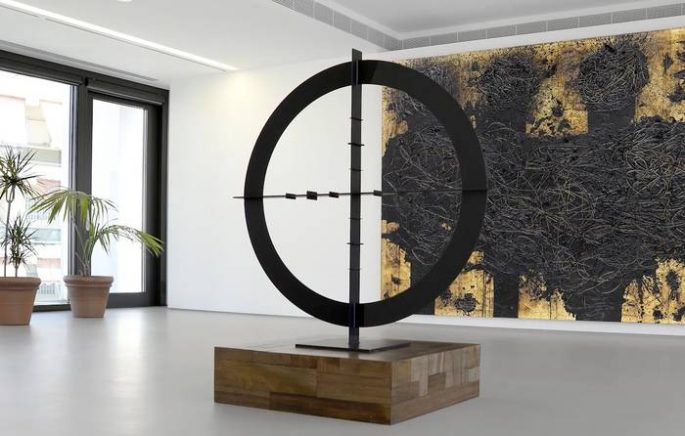
Rashida Johnson’s sculpture is maybe something you love or something you loathe. Doesn’t matter. Go over and stare at it a while. The aim is finding art that calls to you.
Here’s one strategy for finding the art that calls to you:
- Do a slow 360, looking all the way around the gallery.
- Find what sticks out most, whatever it is. It doesn’t have to be the most popular or recognizable thing. Maybe it’s something you love or maybe it’s something you loathe. Doesn’t matter.
- Go over and stare a while.
JUST LOOK
Once you’ve found something you want to spend more time with, dive in. But don’t immediately rush over to the label on the wall. Get close. Look for the marks of the artist’s hand: brushstrokes or chisel marks. Try to find a tiny flaw, or a trace of colour or a shape that you didn’t see at first. Notice whether there’s dust or cobwebs on the top of a sculpture (this is surprisingly common, even in the biggest museums). Now step back a few feet and look at the whole thing again.
Don’t worry too much about whether it’s good or great or terrible.
Just try to see the thing, from every angle you can, and take note of your own reaction. When you’ve done all you can, free yourself to go read the label. You can’t do this with every piece in a show. So, choose your next work and repeat. There are no points for completeness.
LIKING VS. NOT LIKING
When thinking about a work of art, you can find yourself trying to balance out everything you’ve ever read on the subject: questions about value, rarity, genius, talent and meaning. But there’s no single answer, no test question to address. See something you just don’t understand? Or really dislike? Try this:
- Read the text. Here’s where the wall text can be really helpful, giving you context that may change what you initially thought.
- Figure out what bugs you about the work in question and try to articulate a reason.
- If something seems wrong, incomplete or out of place, ask yourself: How could it be improved?
- Note that your discomfort might be part of the artist’s intention, and consider whether that is worth analyzing. (Sometimes it is!) Still hate it? That’s O.K.
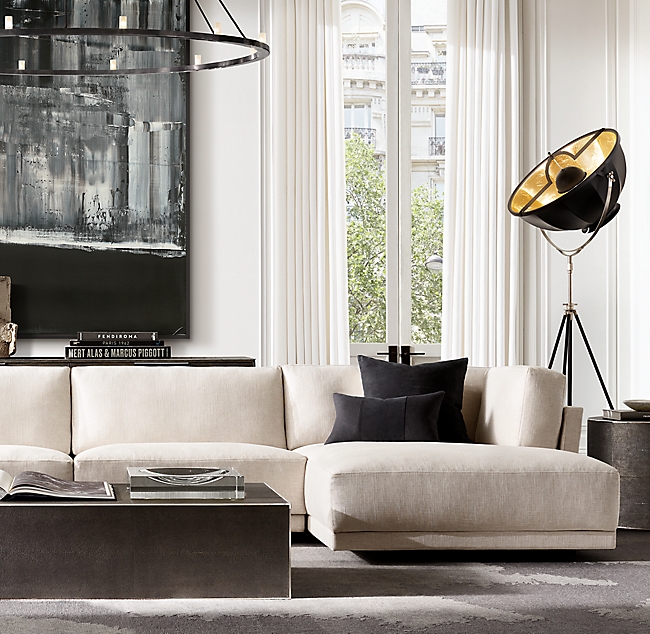
The art world is not a dictatorship. Everyone is allowed to form his or her opinion. Doing so is, in fact, essential to the experience. General Public Art for Restoration Hardware.
CAN MY OPINION BE WRONG?
The art world is not a dictatorship. Everyone is allowed to form his or her opinion. Doing so is, in fact, essential to the experience. You have permission to dislike what’s popular and to champion what’s unfashionable, whether it’s ancient or contemporary, representational or abstract.
That being said, you’ll have a far richer experience if you don’t think solely about whether or not you like something. Bad art can leave a good impression, and some of the most lasting connections may come from works of art that initially made you uncomfortable, angry or confused. Sitting down with those feelings and sorting out how and why they arose is an illuminating exercise on its own. And don’t fake it. This isn’t a competition or a test. There’s no prize awaiting you.
If something feels gimmicky, or cold, or boring, and resists every attempt to understand it, here’s what to do: Walk away.
There’s plenty more to see. (Although there is an excellent chance that an artwork like that will linger in your mind, and you may well find that an hour or a day or a week later, that elusive piece of art is the one that’s stuck with you.)
In wandering through galleries, museums and art fairs, I have found that I usually like about 10 percent of what I see, and I love about 1 percent. (Your experience may vary from that, of course.) But that doesn’t mean that the remainder is worthless. The value comes from engagement. It’s not about trying to rack up the highest score. The things you don’t like will teach you a great deal about the things you do.

Art isn’t a competition or a test. There’s no prize awaiting you. If something feels gimmicky, or cold, or boring, and resists every attempt to understand it, here’s what to do: Walk away. General Public Art for Restoration Hardware artwork.
AREN’T THERE EXPERTS ON THIS?
Yes, but they can be off-putting. Curators, professors, gallerists and critics have all devoted themselves to the study and appreciation of art. They spend years looking, reading, thinking, writing and talking about it. They know a lot. But you needn’t feel cowed. The experts’ job is not to supply answers that you must commit to. They can instead help you, if you want, to come up with your own questions: “How was something made? What other artwork is relevant? Is there a hidden story or a backing idea that isn’t apparent?”
Remember that an expert opinion is still an opinion.
It’s not a judgment that you necessarily have to agree with. Once you realize that, you will likely find these experts extremely helpful, because the truly wonderful thing about them — the New York Times critics very much included — is that they are willing to share their intellectual work with you. The realities of art institutions sometimes make it hard to have an intimately personal experience.
DON’T (JUST) HUNT TROPHIES
It’s fine to stand in line for a glimpse of “Girl With a Pearl Earring” or cram yourself into the crowd in front of the Mona Lisa. But your most rewarding experiences will be elsewhere.
Leave room for serendipity. There’s nothing more fulfilling than making a connection with something entirely unfamiliar. At a big museum, take a detour into the less crowded areas. Having a whole gallery to yourself can be magical.
DON’T OVERDO IT
Your focus is limited. Don’t try to see too much or you’ll burn out. An hour (two, tops) is a good limit. “Spending the day” at a museum may sound nice, but a well-spent hour is often more rewarding.
Loads of museums have special hours, like Friday or Saturday nights, when they tend to have fewer small children and tour groups. These are good times to put in a short visit — just enough time to enjoy yourself, not enough time to get exhausted.
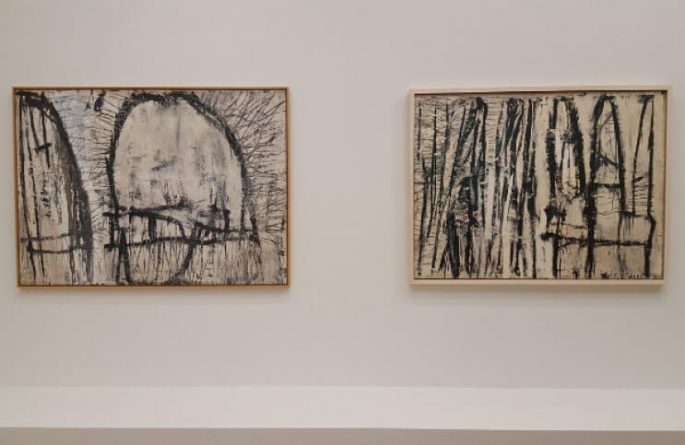
There’s nothing more fulfilling than making a connection with something entirely unfamiliar. Image of Cy Twombly art works.
TO SEE THE BIG DRAW, STRATEGISE
At a big museum special exhibition, where the crowds are heavy, overcrowding can be a real problem. Most visitors will start off slow, trying to read every bit of text and look at everything.
So here’s a trick: skip ahead through the first two or three galleries and you’ll probably find more room to breathe. By the time visitors make it to the third or fourth gallery, they tend to be moving faster. Or, if it’s possible, try going through the exhibition backward.
Bonus hint: a blockbuster show often means lighter crowds for the museum’s permanent collection.
At the Metropolitan Museum of Art, it’s a good time to linger in the Impressionist galleries, which otherwise teem with tourists. Now find one thing you really like. It could be a work that you saw in person that has stuck in your mind, or it could be something entirely new to you. As long as it holds your interest for as long as you look.
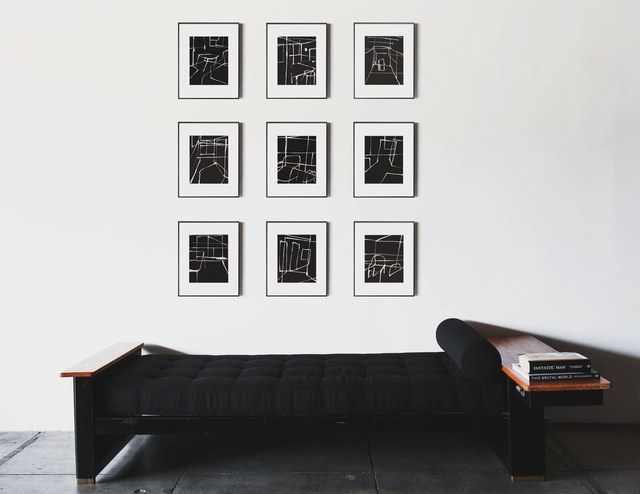
General Public art from Restoration Hardware.
Try this:
- Stare at it a while.
- Zoom in and look as closely as you can.
- Ask yourself: How many colors are in there?
- If there are faces: What do their expressions say?
- See if you can figure out how it was put together, through layers of paint or the strike of a chisel or the weaving of fabric.
- Look into the corners and inspect every inch.
- Zoom back out, and look anew. What you saw up close will change the big picture.
Now that you have a relationship with that one thing you chose, you could get yourself a print of it (or just print it out) and hang it on the wall. Living with it and seeing it every day will change it again. You’ll likely find that it fades into the background a bit. But once in a while, something in that frame will catch your eye. Take the moment to pause and look again, and all of the time you invested before, staring at the work, will get stirred up in your mind. That’s when you know you have a keeper.
Remember, the internet is the biggest art marketplace of them all, and it’s a huge source of affordable, quality work if you know where to look, with prices starting from under $100 for work by some emerging artists.
Of course, the cheapest way to buy art is often to go straight to the source. There are hundreds of talented artists without representation. Finding them can be the hard part, and also the fun part. Plenty use Instagram, and even world-renowned galleries have been known to discover artists this way. Somewhere among the web of hashtags is the piece for you. As an example, a quick look at #sydneyartists brought back a search of 13,300 results. Also try a combination of #contemporaryart #instaart #fineart #instagallery #artist #artistsoninstagram #artwork #art and #artoftheday, or find some local galleries and gallerists on the social-media platform, and see who they’re following.
People don’t always specify prices, or even if the work is for sale, but that information is only a DM-slide away.
Use your discretion here of course, and ask lots of questions of the artist, from the materials used, to how many prints are included in the edition – you don’t want to find yourself with a supposedly original work, which was printed down the road at Officeworks.
Parts of this article are from an edited extract from the New York Times.

